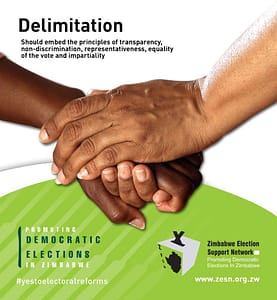Alex Magaisa: Big Saturday read, of Shiri’s death, 31 July protest

Alex Magaisa
Lessons from the Farm Mechanisation Scandal
The big story this week is the demonstrations which were scheduled for 31 July 2020. It’s the day that the regime blinked first and revealed the extent of its vulnerability and insecurities. However, before we get to that, it’s appropriate to round up the Farm Mechanisation Scandal which has occupied us for the past two weeks. What lessons did we learn from that epic scandal?
The Farm Mechanisation Scandal exposed the egregious levels of systemic corruption at all layers and in every corner of the Zimbabwean state. The denials by beneficiaries confirmed that those who partake in these opaque and corrupt schemes have lost sense of the distinction between right and wrong. Corruption is their normal.
This is why they are surprised by arguments that their conduct is highly disagreeable and corrupt. They are so used to freebies from the government that they do not realise that they impose a huge cost on the rest of society. They do not appreciate that for every free penny from the government, there is someone who is paying for it. That someone is poorer than them.
Evidence of Capture
We presented the data on the Farm Mechanisation Debt demonstrated according to the position and role of beneficiaries within and around the structures of the State. These categories were politicians, senior civil servants, traditional leaders, religious leaders, judges, securocrats, members of independent commissions. The purpose was to demonstrate the extent to which these essential pockets of the state and society were compromised.
The selection of beneficiaries was not random. Those who allocated the public resources knew what they were doing. They were capturing both the institutions and members within them. They were the benefactors and the beneficiaries were supposed to be appreciative of their favours.
It is easy to see why someone would want to control these institutions or at least to enjoy the advantage of their favour. The judiciary, commissions, and securocrats are the key institutions which have a significant role in the balance of power within the state. Church leaders and chiefs are powerful social institutions with huge social capital. Judges and members of independent commissions are political referees who resolve disputes. They also provide a veneer of legitimacy to democratic processes. Securocrats hold the most potent power in the political community.
While it had previously been suggested that these institutions are compromised and that this led to bias in their conduct in political matters, the contribution of the BSR expose on the Farm Mechanisation Scandal was to present the hard facts and figures to substantiate those claims. Where previously there was speculation concerning the cause of bias of these institutions, now there was evidence showing why members of these institutions were beholden to ZANU PF and powerful individuals. In political terms, the opaque grants under the Farm Mechanisation Scheme fall in the category of rents paid to political referees and social institutions in return for future favours.
For the first time, it became evident to most people why certain religious leaders habitually support the ZANU PF regime even when it commits the most heinous acts upon citizens. It became clear why some judges generally lean towards the state and the ruling party. They do so because they are beneficiaries of the system. They feel beholden to it.
The system makes sure everyone has a piece of the pie, even though some get bigger portions than others. Many of them did not even know that they were getting smaller portions until the exposure of the Farm Mechanisation Scandal. They were just happy to be getting something without paying and they were grateful for it. They returned favours by leaning towards the regime, even without being told to do so.
The power of political blackmail
Ensuring that all the elites get something achieves another purpose: it creates a brotherhood in which everyone is sworn to silence. They cannot divulge details of the scheme without exposing their part in it. To those in charge of allocation of these public resources, it’s a form of blackmail. It’s a powerful weapon which they use to silence any dissenters. This is because if someone dares question them, all they have to do is to pull out the file and say but we also gave you a tractor or a plough. Having everyone in the racket is therefore an insurance policy for those who control the allocation of public resources.
All this means whoever has control or the favour of these key officers of the state has a lot of power over everyone. It also means these institutions are effectively captured by that person or group of persons. The Farm Mechanisation Scheme provided a perfect space for building a system of patronage. Those who had the power to dish out loans were able to present themselves as benefactors to a large number of beneficiaries. Everyone who got something was grateful for the favour. The fact that the loans were converted into grants was an added bonus. On top of being selected beneficiaries, they did not even have to pay back the loans.
Extractive Institutions – how the rich extract from the poor
This brings us to the next point, which is that the Farm Mechanisation Scheme is a typical example of weak and extractive institutions which are usually found in low income countries. It has been argued with great force by economists Acemoglu and Robinson in Why Nations Fail, that some nations fail because they have weak and extractive institutions. The Farm Mechanisation Scheme, which allowed a few political elites to extract public resources under the guise of loans illustrates an extractive institution. The scam was complete the moment public resources obtained as loans were soon converted into grants, the legality of which is doubtful. Having the poor majority pay for agricultural machinery and equipment which benefited a few elites is exploitative and unconscionable.
A Systemic Problem
This leads to the point that ordinary citizens pay to support the lifestyle of wealthy elites who are the majority of beneficiaries of publicly funded programmes. This is because while the elites benefit from the loans they obtain from the government, they never pay them back. Instead, they are eventually passed on to the taxpayers. So when a farmer failed to pay a loan of US$400,000, the bill was passed on to the taxpayers.
As we shall see in future BSRs, this was not limited to the Farm Mechanisation Scheme. The same pattern was evident in fuel allocations by the RBZ, in Command Agriculture and in the various agricultural inputs schemes over the years. It is also evident in the large bills for electricity which political elites never paid. When ZESA, the power utility is bailed out by the government because it is broke, it is the taxpayers who are effectively picking up the bill.
We shall also see in the near future that this is the central problem with loans which commercial banks sold to ZAMCO, a company which was set up by the RBZ in 2014. To pay for these bad loans, the RBZ issued Treasury Bills to the banks, adding to the country’s domestic debt burden. These bad loans were given to political elites who failed to pay them back. What this means is that while elites got huge loans which they did not pay back, it is the taxpayers who pick the bill through ZAMCO.
There is a clear pattern in Zimbabwe where elites take out huge loans for their sole benefit and then later transfer that debt to taxpayers. What protections are there for the taxpayers and why are they failing? Parliament is meant to be one of those protectors but since its members are also beneficiaries of these schemes, they are conflicted.Instead of serving the interests of the people they represent, they prioritise their self-interest. This is why Parliament passed the RBZ Debt Assumption Act in 2015, transferring elite debts to the taxpayer.
An Opaque and Corrupt Scheme
A further point we learnt from the Farm Mechanisation Scheme is that it was a corrupt programme. The corruption was encouraged by the lack of transparency and opaqueness which characterised both the procurement and allocation of public resources. There is as yet no hard evidence but a fair assumption that without following public procurement procedures, the supply-side of the scheme was mired in conflicts of interest and price inflation.
Until now, information concerning beneficiaries of the scheme was a closely guarded secret. Inane excuses including confidentiality and official secrecy laws were cited as justification for refusing to disclose the beneficiaries. But they were baseless justifications because at law, public debt is not an official secret. On the contrary, the Constitution has always required public disclosure of public debt. It also requires approval of public debt by Parliament.
The former governor of the RBZ said they were not loans (which has since been debunked) and that they were grants, which bolsters the argument for public disclosure of beneficiaries. Why should beneficiaries of state grants be kept a secret when they are benefiting from public funds? The only persons who benefited from the darkness that surrounded the Farm Mechanisation scheme were those in charge of procurement and allocation of the machinery and equipment.
Corruption as a tax on the poor
An essential point emerging from all this is that corruption imposes a high cost on society. The bill for the Farm Mechanisation Scheme is an additional tax on society. This is because it is the taxpayers who must bear the cost. It’s an unconscionable tax. The problem is even more significant when one considers the bills for Command Agriculture, ZAMCO loans, ZESA bills, the bill for compensating commercial farmers.
All this shows the pervasive and destructive nature of extractive institutions, of which the Farm Mechanisation Scheme is just one small example. There can be no progress in Zimbabwe when the environment is dominated by extractive institutions and programmes like the Farm Mechanisation Scheme. But, as already intimated, more of this egregious corruption will emerge over the next few months as similar scams on poor Zimbabweans are exposed.
Death of Shiri: Who or What did the deed?
The other big news this week was the death of Perrance Shiri, a retired general who led the Air Force of Zimbabwe for many years. It is impossible to mention Shiri without Gukurahundi, the genocidal campaign in Matebeleland and the Midlands which killed an estimated 20,000 people in the 1980s. Much has already been written and more will be written about the man’s career. Of interest on this occasion is the apparent controversy and suspicion over the cause of his death.
Far from dousing suspicions, President Mnangagwa’s statements after Shiri’s demise only served to fuel more suspicions. Speaking at the funeral wake, Mnangagwa bizarrely waved an envelope saying that they had received results of the cause of death, confirming that it was COVID19. Up until that time, the narrative had been that Shiri succumbed to COVID19. The sight of Mnangagwa waving an envelope gave the impression of a man who was trying too hard. If the intention was to kill suspicions of foul play, it achieved the opposite.
As if that was not enough, Nick Mangwana, Mnangagwa’s Permanent Secretary for Information and Publicity posted a tweet saying “some of the symptoms [of COVID19] are said to even mimic food poisoning”. The tweet was neither random nor innocent. It was posted in the context of rumours circulating around Shiri’s death that he was the victim of food poisoning. If anyone had doubted the plausibility of the theory of food poisoning, Mangwana’s tweet gave it more legs and energy.
I thought the two gentlemen had protested too much. Both Mnangagwa and Mangwana had been drawn to publicly react to a rumour of foul play, which prompted observers to wonder why they felt compelled to do so. Their actions did not kill the rumour. They gave it more life. Shiri may very well have succumbed to COVID19, but the excessive efforts to prove it has left a cloud of doubt suggesting that he was assassinated.
The most important issue in this situation is an examination of why Mnangagwa took this unusual step. In other words, given that it was so unwise and unhelpful, what could have compelled Mnnagagwa to present evidence of the cause of Shiri’s death at his funeral? It is probable that Mnangagwa felt the pressure of the rumour that Shiri was poisoned. The big story here is how Shiri’s death is being viewed within the current tense relations withIN ZANU PF.
In this regard, it is worth noting that Vice President Constantino Chiwenga had given a narrative which suggested that Shiri was not in bad health. He said he had spoken with him only a few hours before his death was announced. There is, it seems, a section of ZANU PF that does not believe Shiri died a natural death. When he waved that envelope at the funeral with purported results of Shiri’s positive test for COVID19, Mnangagwa was not addressing the world. He was addressing his colleagues and subordinates in ZANU PF who see Shiri’s death as suspicious.
Likewise, when Mangwana tweeted that new symptoms of COVID19 “mimic food poisoning”, he was supporting his boss’ narrative that Shiri died due to COVID19, not food poisoning. Both men were addressing their suspicious colleagues in ZANU PF. But their interventions were hardly persuasive. If anything, they increased the existing suspicions and tensions. Who brings evidence of cause of death and waves it at a funeral?
July 31 Demo
So July 31 has come and gone. Harare resembled a ghost town. The streets were empty. Shops and businesses were shut. All the arterial roads leading into the city centre had roadblocks manned by police and soldiers. Yet again, Mnangagwa had deployed the military. This is the fourth time since Mnangangwa became President in November 2017 that the military has been deployed ostensibly to assist the police to keep law and order.
The outcome of the heavy military presence was that people were unable to march in the streets as they had intended to do. So what does this mean? Does it mean the demo failed? It would be simplistic to ascribe failure to the demonstrations just because the marches across the country did not happen. Rather, the fact that the government took heavy pre-emptive action to stop the marches shows the seriousness with which it took the demonstrations. It also reveals the real fear that the government has concerning the people. Otherwise it would allow the people to march and express themselves.
True to form, the government took a heavy-handed approach to those who expressed themselves. In the run up to the protests, it arrested and detained Jacob Ngarivhume, the opposition politicians who made the first call for the demonstrations. It also detained renowned investigative journalist Hopewell Chin’ono, who helped to expose corruption over the procurement of COVID19 goods and equipment and was also supporting the demonstrations.
On the eve of the demo, it raided another journalist, Mduduzi Mathuthu’s home. When they didn’t find him, they took his sister into custody, a crude strategy to force Mathuthu out of hiding. They had earlier arrested his nephews one of whom was still missing and unaccounted for by late Friday afternoon. On 31 July the regime arrested Fadzayi Mahere, spokesperson of the MDC Alliance and Tsitsi Dangerembga, Zimbabwe’s world famous writer whose latest novel The Mournable Body is on the 2020 long-list for the prestigious Booker Prize.
There were many more arrests across the country, with countless other activists going into hiding. All this has brought negative attention and publicity to Zimbabwe. Like its predecessor, the regime has a penchant for shooting itself in the foot.
Therefore, even without the mass demonstrations that people would have wanted, July 31 has been an important expression of discontent towards the Mnangagwa regime. It turned into one large stay-away enforced by the regime. The purpose of any demonstration is to send a message and in that regard, July 31 has been an important expression by the people and by the government to its people. The people are fed up and the regime is scared of the people.
This is a regime that no longer enjoys public consent. Instead, it relies ever more on coercion. It has, as it has done twice before, had to resort to the boys in military fatigues to forcefully enforce its power. This is because it can no longer rely on people’s consent. A government based on consent relies on obedience and compliance by the people. It does not make military force the default instrument to enforce its authority. Mnangagwa cannot even trust the regular police service. Instead he has to depend on the soldiers.
However, as I have argued before, reliance on coercion is unsustainable in the long run. It is costly because the agents of coercion, namely the soldiers, must be kept happy through a system of incentives. Such incentives are not infinite. Reliance on soldiers to enforce the regime’s rule is also counter-productive because it is a double-edged sword. It might work against the people, but it will also end up working against the rulers. For sooner or later, the soldiers will discover that they have power and they do not have to serve the rulers.
Instead of exercising power indirectly through their rulers, they will discover that they can have direct access to it. They will by-pass the rulers. This is more commonly referred to as a coup. This means the more Mnangagwa relies on the military to enforce his rule, the more he exposes himself to the power of the military. This is particularly the case as tensions rise within his party.
It is unclear what strategy organisers of the 31 July demonstrations had in mind. It would be a waste if it were limited to a one-day affair. Authoritarian regimes are not affected by one-day events. The image that comes to mind is that of waves crashing against a cliff. Theirs is a relentless mission, coming and going, gathering force with every ebb and flow. It has to be an incremental process.
The essential question on 31 July was who between the government and the organisers would blink first. The government panicked and blinked first, and in the process, it betrayed its fears and insecurities. The government cannot permanently rely on coercion. It is expensive and tiring. There will come a point when fatigue catches up with the agents of coercion.
The world has had no shortage of regimes which placed all their bets on the military, only for the latter to regain its sense of moral judgment, realising that its interests were more aligned with the suffering masses than with the thieving minority of political elites. That day will arrive in Zimbabwe one day, but only if the people continue to express themselves, even without doing anything, like what happened on 31 July.
WaMagaisa
wamagaisa@tutanota.com




